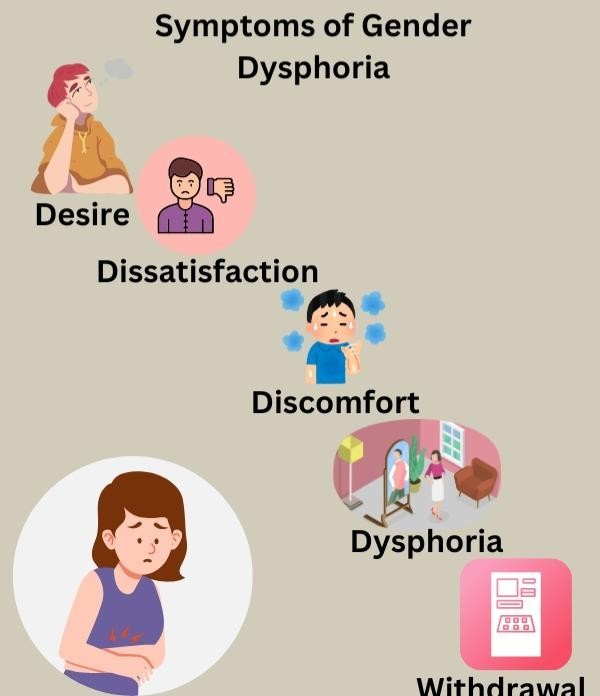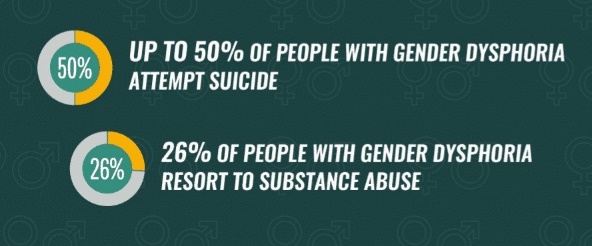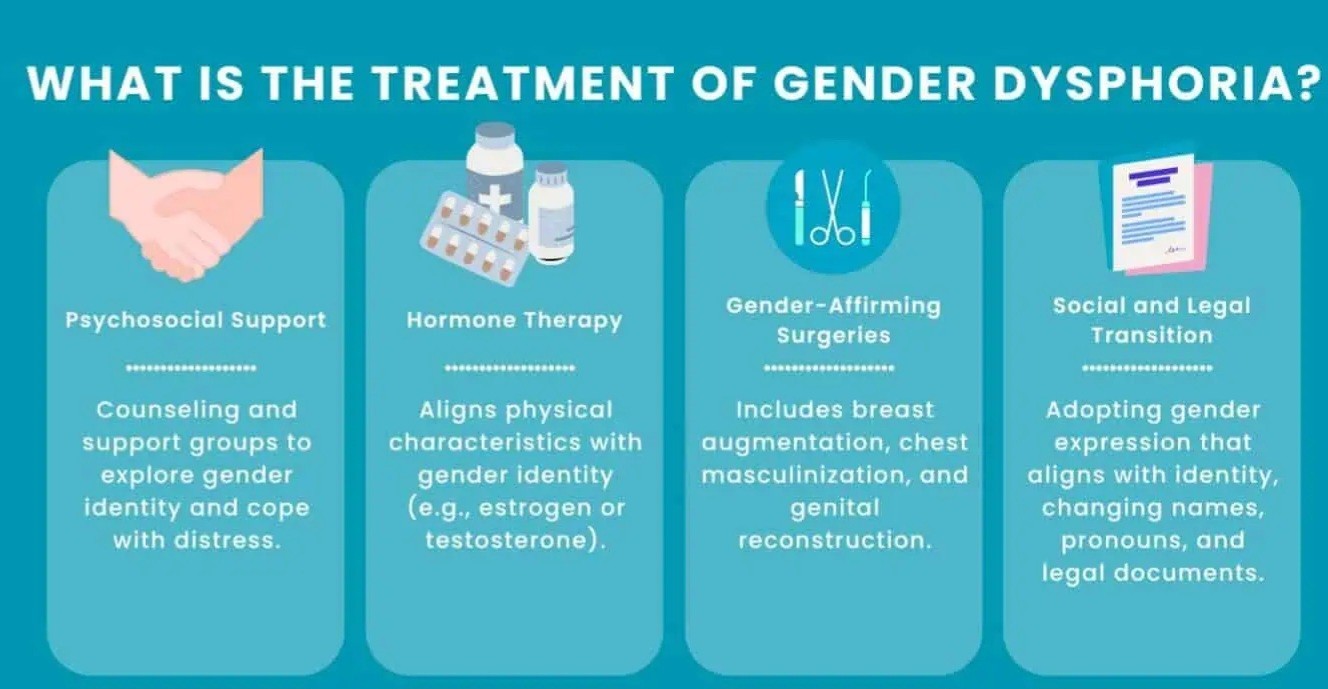Pediatrics and Child Health Issues
OPEN ACCESS | Volume 5 - Issue 2 - 2025
ISSN No: 2836-2802 | Journal DOI: 10.61148/2836-2802/JPCHI
Hesham Maged Mohamed Abdel Fatah
The main only author and corresponding author. International Scholars, international researcher, member of editor board of international journals in psychiatric field, Neuropsychiatry Doctor, Cairo University, Egypt.
*Corresponding author: Hesham Maged Mohamed Abdel Fatah, The main only author and corresponding author. International Scholars, international researcher, member of editor board of international journals in psychiatric field, Neuropsychiatry Doctor, Cairo University, Egypt.
Received: August 24, 2025 | Accepted: September 20, 2025 | Published: September 25, 2025
Citation: Hesham Maged Mohamed Abdel Fatah. (2025) “Gender Identity Disorder in Childhood and Adolescence: A Narrative Review’’, Pediatrics and Child Health Issues. 5(2); DOI: 10.61148/2836-2802/JPCHI /072.
Copyright: © 2025. Hesham Maged Mohamed Abdel Fatah. This is an open access article distributed under the Creative Commons Attribution License, which permits unrestricted use, distribution, and reproduction in any medium, provided the original work is properly cited.
Cisgender: describes someone whose gender identity aligns with their gender assigned at birth.
Gender expression: The way someone outwardly expresses their gender through hair and clothes.
Gender identity: A person's inner sense and experience of their gender which may be different from the gender assigned at birth.
Nonbinary: An umbrella term for individuals whose gender falls outside of the traditional male/ female binary.
Sexual orientation: Refers to a person's enduring pattern of romantic, emotional, and sexual attraction towards others.
Trans Engender.
An umbrella term to describe someone whose gender identity does not align with their gender assigned at birth.
we will also discuss the definitions and diagnostic criteria of gender dysphoria and understanding it’s influenced by multiple factors, we find an increasing evidence of genetics, hormone influences, and neurobiology on gender identity in children and highlights the increased risk of psychiatric comorbidities like depression, anxiety, substance abuse, and suicide. also we found the importance of early recognition, mental health and medical intervention through hormone treatments for gender-affirming hormone therapy in decreasing mental health disorders and improving quality of life among transgender children and adolescents.
Gender dysphoria; transgender; gender-diverse youth; gender identity
Discussion:
What is gender identity disorder?
Gender identity disorder is a state of intense distress or anxiety, psychological distress, and anxiety resulting from a person's gender identity differing from their assigned sex at birth. This intense and profound distress can lead to psychological problems if untreated.
Gender identity disorder can begin at any age, from childhood to adolescence and adulthood.
Symptoms of Gender Dysphoria.
Recognizing the symptoms of gender dysphoria is the first step toward understanding and addressing it. Symptoms can vary widely depending on age, cultural context, and individual experiences, but they generally include the following:
1-Persistent Discomfort with Assigned Gender.
A strong desire to be of a gender different from one's assigned gendouts. 2-Feeling uncomfortable in one's body.
particularly in relation to sexual characteristics. 3-Strong Preference for the Other Gender.
Preference for wearing clothes, playing with toys, or engaging in activities typically associated with another gender.
4- Persistent belief that one is, or should be, another gender.
5- Emotional Distress.
6- Significant distress or impairment in social, occupational, or other important areas of functioning.
7- Feelings of anxiety, depression, or frustration related to one's gender identity.
8- Desire for Physical Changes.
A strong desire to rid oneself of primary or secondary sexual characteristics.
9-A strong desire to acquire the physical traits of the identified gender.
10-Age-Related Symptoms.
Children: Repeated statements that they want to be or are the opposite gender, preference for cross-gender roles in play, and rejection of clothing or toys associated with their assigned gender.
Adolescents and Adults: Intense desire for gender transition, including hormone therapy or surgery, and persistent identification with another gender.

Figure 1: Symptoms of Gender Dysphoria
Causes of Gender Dysphoria.
The causes are unclear, complex, and not fully understood. They may result from biological, psychological, and social factors. Here are some possible causes:
First, Biological Factors.
Some research suggests that genetics may play a role in gender identity. Studies have indicated a possible link between gender identity disorder and certain genes.
Second, Hormonal Factors:
Hormonal imbalances during fetal development are believed to affect gender identity. Differences in exposure to androgens (male hormones) may influence the development of gender identity.
Third, Brain Cells. Differences in brain cell structure have been observed in individuals with gender identity disorder, suggesting a neurological component to gender identity.
Fourth, Psychological Factors.
Early childhood experiences, such as family dynamics, attachment, and socialization, affect gender identity. Children who experience a lack of acceptance and emotional insecurity may have difficulty identifying their gender identity.
Fifth, Mental Health.
Although gender dysphoria is not inherently a mental illness, individuals with gender dysphoria may experience mental health disorders, such as anxiety or depression, especially if their identity is not supported.
Sixth, Social and Environmental Factors.
Culture and Societal Norms: Societal norms regarding gender roles can contribute to the development of gender dysphoria in cultures with strict sexual norms.
Seventh, Family and Age-Related Peers. Supportive or unsupportive family and peer environments can influence the development of gender dysphoria and the severity of symptoms. Here, the powerful role of acceptance and understanding from close relationships in an individual's health is evident.
Eighth, Interaction of Multiple Factors.
Gender dysphoria is the result of a complex interaction between these factors, not a single cause. Each individual's experience is unique and specific, and understanding the multifaceted nature of gender dysphoria is essential for the treatment team to arrive at the optimal treatment for this disorder.
Diagnosis of Gender Identity Disorder.
Diagnosing this disorder requires a comprehensive evaluation by a qualified psychiatrist. The diagnosis is based on the criteria outlined in the Diagnostic and Statistical Manual of Mental Disorders (DSM-5).
This manual sets out criteria for diagnosing gender dysphoria in children, adolescents, and adults. The main criteria include a marked discrepancy between the person's desired and expressed gender and their birth gender. This discrepancy must last for at least six months and be accompanied by significant anxiety and distress. For children, the criteria include a strong desire to be of a different gender, a preference for different gender roles, and an intense dislike of their birth gender and genitalia.
Comprehensive Evaluation.
A comprehensive evaluation typically includes a detailed clinical interview to understand the individual's gender identity, history, and past and current experiences. This evaluation may also include psychological testing to rule out other conditions, such as dementia or schizophrenia, and the impact of gender dysphoria on the individual's daily life, including social, occupational, and interactive functioning. Gender Identity Disorder Tests: There are several assessment tools and tests that a psychiatrist may use to support a diagnosis, assess the severity of symptoms of gender dysphoria, assess general mental health status, and assess readiness for gender transition. Examples of these tests include the Gender Identity Disorder Questionnaire for Adolescents and Adults (GIDYQ-AA) and the Utrecht Gender Dysphoria Scale (UGDS).
The Impact of Gender Identity Disorder on Mental Health.
Gender identity disorder can significantly impact an individual's mental health, especially if left untreated. The distress, anxiety, and stress associated with gender identity disorder can lead to negative mental health consequences, such as:
1- Anxiety and Depression.
Many people with gender identity disorder experience anxiety and depression, especially when faced with rejection, discrimination, or lack of support from family, friends, or society. The psychological impact of living in a body that does not align with their gender identity is profound, leading to feelings of despair, sadness, and hopelessness.
2- Social Isolation.
Fear of being misunderstood, rejected, or bullied can lead to social withdrawal and isolation. People with gender identity disorder may avoid social events, leading to loneliness and exacerbating mental health problems.
3- Suicidal Thoughts.
Studies have shown that individuals with untreated gender identity disorder are at greater risk for suicidal thoughts and behaviors. Up to 50% attempts suicide. The combination of internal distress and external pressures can lead to feelings of hopelessness and despair, which can lead to suicidal thoughts.
4- Substance Abuse. 26% of gender dysphoria resort to substance abuse.

Figure: 2- preference of complications of gender dysphoria
Gender Identity Disorder Treatment.
Treatment typically involves a combination of psychological support and social transformation. Below is an overview of the available treatments:
1- Gender Affirmation Therapy.
This type of therapy focuses on helping individuals explore their gender identity, adapt to their birth gender, and transition if desired. This therapy provides a safe space to discuss feelings, fears, and questions related to gender identity.
2- Cognitive Behavioral Therapy (CBT).
CBT can be helpful in treating anxiety, depression, and other mental health issues associated with gender dysphoria. It helps individuals overcome negative thoughts and develop healthier family and social relationships.
3- Legal Name and Gender Identity Change.
Many individuals choose to change their name and legal gender to reflect their true gender identity. This step is an important part of the social transition process.
4- Social Support.
Building a social support network of friends, family, and peers who affirm one's gender identity is crucial for mental health.
5- Ongoing Support.
Long-term mental health support is essential for individuals with gender dysphoria, even after transition, to maintain mental and physical health.
6- Self-Care.
Encouraging self-care practices, such as mindfulness, exercise, and healthy eating, can help individuals manage stress and improve their overall health.

Figure 3- Treatment of Gender-Dysphoric
Conclusion:
Gender dysphoria is a deeply personal and often challenging experience that requires understanding, compassion, and support. By recognizing the symptoms, exploring the causes, and seeking a proper diagnosis.
Now There's being significant progress in understanding gender issues among children, adolescents, and young adults, but there remains a clear gap in knowledge about medical services for them and how to provide clearer medical community support. Further studies on the biological basis of gender diversity, along with attempts to explore genetic influences and the role of endocrinology, may help redefine this concept and reduce its societal stigma. There are strong recommendations for continued multidisciplinary medical care that will provide solutions through physical, psychological, and social interventions.